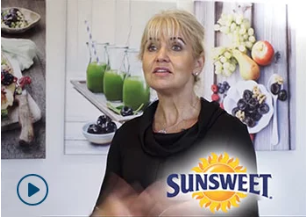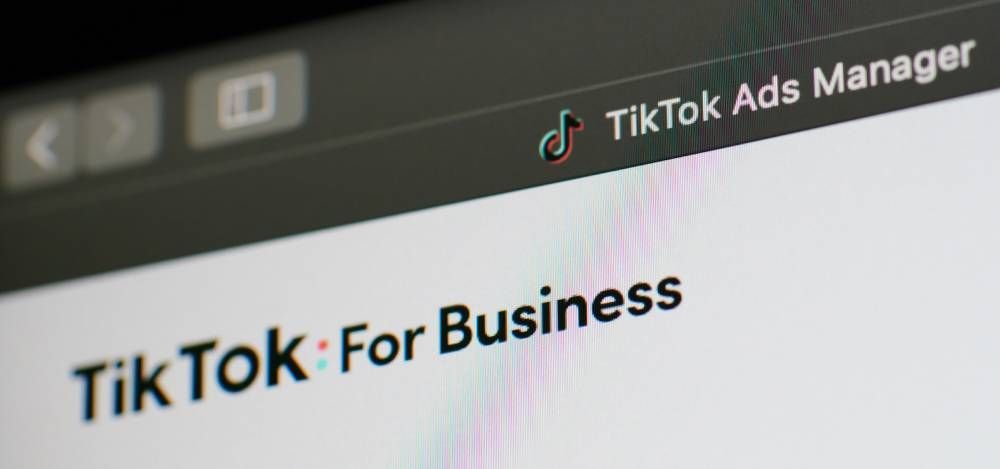- HOME
- ABOUT US
- SERVICES
- CUSTOMER STORIES
- OUR EXPERTS
- CONTACT US
- RESOURCES
555-555-5555
In need of some sound digital marketing advice?
Book a free consultation with one of our experts.

Making a difference in our clients’ lives
We positively impact the lives of our clients beyond their KPI reports.

Content Marketing: The Lifeblood of Digital Marketing
Cheryl Baldwin
Digital Marketing Consultant
July 3, 2020
A long time ago, marketing involved a lot of interruption. To get the word out about a product, service, or brand, marketers, and advertisers would place ads in newspapers, between TV shows and songs on the radio, on building and billboards – hoping to catch a consumer’s attention during some other activity.
Some efforts were more subtle: paying a celebrity to wear a particular brand, or showing a beloved character in a movie using one specific type of dish soap. Others even more closely resembled today’s content marketing, like educational brochures on a front desk, free checklists mailed to your house, or a sponsored article placed in a popular magazine.
The Rise and Fall of the Content Farm
Then came the internet, a breeding ground for cheap and fast content production. Businesses realized they could attract new customers by answering their questions rather than creating expensive printed materials or interrupting their media, so they commissioned content farms to produce cheap, low-quality content en masse.
Many businesses used shady SEO practices to “hack” the system so their unhelpful content would rise in the search results page.
Fortunately, Google caught on and began rewarding high-quality content and penalizing the junk. Today, marketers face a unique challenge that also presents an opportunity. Consumers have access to more information than ever. They can choose which media they want to consume, and which they wish to ignore.
The solution? Content marketing.
What Is Content Marketing?
Content marketing strives to be the media that customers want to consume. Instead of interrupting a TV show, for example, content marketing is the TV show.
Content marketing isn’t limited to one type of media, either; it spans many formats and channels, with more being invented every day.
Content marketing can be a:
- Blog
- Loose-leaf printed material
- Movie, TV show, or YouTube episode
- Podcast
- Video game
- Book
- Facebook, Instagram, or LinkedIn post
- Quiz or other interactive content
Your Content Marketing Strategy
Your content marketing strategy, like any marketing strategy, should be tied to your broader business goals. Are you launching a new product, expanding into a new target market, or focusing on client retention and increasing customer lifetime value? Define your business goal, and then you can lay the framework for your content marketing strategy.
Next, consider the topics related to your business line that you want to be known for – and connect those back to your more prominent business goal. If you’re a plant nursery hoping to increase brand awareness, your broad topics might be “landscaping,” “vegetable gardening,” “annuals,” and “perennials,” for example.
Before you get into the nitty-gritty of what you’ll create, you’ll want to spend a good chunk of effort identifying and getting to know your target audience. Remember – content marketing is all about the people consuming your content, not about you. If what you create isn’t entertaining, informative, or educational, it isn’t effective content marketing.
Getting to Know Your Target Audience
Defining your audience, and catering your content to them, is one of the hardest parts of good content marketing – but possibly the most essential. There are many different ways to garner information about your target audience’s interests, beliefs, and problems:
- Talk to the sales team. Your sales teams, no matter how big or small, interacts with prospects more regularly than anyone else. They’ll be privy to common objections, questions, and concerns your leads are facing – and they’ll have insights into what’s driving customers to make a purchase.
- Study the data. Get a Google Analytics account for your website to learn about what people are doing on your site, which pages they prefer, and which search terms are leading people to you. Use Google Search Console to conduct basic keyword research for free, or opt for a paid service like SEMrush or Moz for more in-depth functionality.
- Conduct primary research online. Consumer behavior on social media, review sites, and forums can tell you a lot about your audience's issues. It can also serve as an excellent tool for brainstorming content ideas.
- Talk to them directly. Content Marketing Institute states that while only 43% of B2B content marketers talk to customers directly, and open conversation is one of the most effective ways to get accurate, updated information. Conduct a panel, survey, focus group, or reach out to individual customers directly for feedback.
Once you’ve gathered data about your target market, create customer persona documents for your content team to reference. Your writers and designers will be thankful for this, but a clear definition of personas will guide the next step in your content marketing efforts: choosing which types of content to produce.
Content Planning for Content Marketing
The biggest mistake you can make, as a marketer, is to create a whole bunch of disparate content pieces and publish them at random.
Even if they’re all related by subject matter, they won’t have any impact on the business if they don’t relate to one another and work together to move customers down your sales funnel.
To get the most out of your strategy, let your marketing funnel guide your content production. Some types of content work better as top-funnel lead magnets, while others are superior for helping you close a sale.
Top Funnel Content
This is content for your cold leads and prospects. These are the people who either haven’t heard of you or don’t know enough about you yet to make a buying decision.
Top-funnel content should make your potential customers excited to engage with your business. Humor, uniqueness, and authenticity help content stand out in this phase. Common goals for top-funnel content include generating leads and nurturing prospects. Here are the types of content that usually perform well as top-funnel pieces:
- Blog posts
- Lead magnets (valuable, free resources)
- Explainer videos
- Podcasts
- Helpful/interesting newsletters
For more on using content marketing for top-funnel initiatives, check out our video series on attracting new customers with content marketing.
Middle Funnel Content
Middle-funnel customers are aware of your brand but haven’t purchased yet. They may not fully understand your product or service or see how it will make their lives easier.
Your job as a content marketer is to help mid-funnel prospects weigh their options while providing a deeper understanding of your offerings. The best content for the middle of the funnel includes:
- Infographics
- Events
- One-pagers and flyers
- Webinars
- Software downloads
- Educational resources
- Discount or coupon club emails
- Whitepapers
Bottom Funnel Content
Bottom-funnel customers have their credit card in-hand and are ready to buy – but haven’t pulled the trigger. They may also be previous customers who are thinking of buying again.
Bottom-funnel content should focus on landing the sale. It should show why you’re trusted, the most exceptional value, or the best at what you do. It should inspire existing customers to come back for more.
- Company newsletters
- Case studies
- Classes
- Landing pages
- Demo videos
- Rewards programs
- Free trials
- Direct mail and letters
Read More: Content Marketing Ideas to Try
Writing Creative Briefs: The Nitty-Gritty
Once you’ve identified the types of content you need for each stage of your funnel, it’s time to get down to the details and write your creative briefs. A brief can be anything from a single paragraph to a full page (or two), as long as it clarifies to your writers, designers, video editors, and other professionals as to what you’re looking to receive. Here are some things to include:
Title or Headline: Plan your headlines, video titles, lead magnet titles, and more based on the topics you want to cover, or the keywords you want to be on focus. It should be descriptive and compelling; even if you create great content, your prospects will never consume it if the title does not hook them.
Final format: What will the final piece look like? Is it a blog post, PDF, or printed eBook? Is it video content or social media image? For design content, specify whether you need final files, design files, or both.
Distribution channels: Where will this content be distributed? It could be your website, a guest post on a popular media site, YouTube, or a podcast platform, for example. An organic Facebook post has different technical requirements and best practices than an Instagram post, so lay out your expectations.
Length or word count: If it’s a written piece of content, how long should it be? A blog post may be in the 800 to 1500-word range, while a long-form piece of content might vary from 2,000 words to tens of thousands.
Purpose and description: What will the content be about? What questions should it answer, and what should the viewer or reader feel after consuming it?
Call to action: What do you want the prospect to do after checking out your content – click a button, send an email, make a phone call, or buy something?
References: If you have transcriptions of SME calls, reference URLs, images on Pinterest or Shutterstock (for design projects), or anything else that will help your creative team see your vision, include it.
Read More: How to Create a List of Blog Topics
How to Create High-Quality Content Marketing
Since the key to content marketing success in 2019 (and beyond, we’re willing to wager) is quality over quantity, you will get the best return on your investment if you focus on creating top-tier content.
Here are a few tips for creating content that wins:
Remember that you get what you pay for. There are still many content farms racing to the bottom, charging very little for content creation. But this comes at a high price for you. If what you’ve created is unclear or poorly designed, your content may hurt others’ perception of your business or brand.
Look for specialists rather than generalists. It’s easier than ever to find someone with the exact experience and skill you’re looking for. Use freelance platforms like PeoplePerHour, Upwork, and Hubstaff Talent to find the perfect contractor for the job.
Measure and improve. Don’t release your content into the world and move on to the next thing: use the tools you have
Don’t be promotional. Content marketing isn’t about promotion. That’s what ads are for, and even they’re shifting toward a customer-centric approach. When you write about your customer’s world and take the ego out of your content, you’ll produce something worth reading and sharing.
Do what only you can do. As more information becomes readily available for free online, merely having answers isn’t enough to compel prospects anymore. If you have a unique perspective or story, share it – nobody else has that same gift to give.
The Best Digital Marketing Insight and Advice
The WSI Digital Marketing Blog is your go-to-place to get tips, tricks and best practices on all things digital marketing related. Check out our latest posts.
Subscribe Blog
Thank you for contacting us.
We will get back to you as soon as possible.
We will get back to you as soon as possible.
Oops, there was an error sending your message.
Please try again later.
Please try again later.
*You may unsubscribe from digital communications at anytime using the link provided in WSI emails.
For information on our privacy practices and commitment to protecting your privacy, check out our Privacy Policy and Cookie Policy.
For information on our privacy practices and commitment to protecting your privacy, check out our Privacy Policy and Cookie Policy.
Don't stop the learning now!
Here are some other blog posts you may be interested in.
Don’t miss this opportunity to unlock the potential of AI for your portfolio company. Whether you're looking to streamline operations or improve customer service, this session will provide the insights you need to take action.
Schedule a One-on-One consultation
If your company is already exploring AI opportunities or facing specific challenges, skip the wait and schedule a one-on-one consultation with WSI’s AI experts. During this session, we’ll discuss your unique needs and identify potential AI-driven solutions tailored to your business.
© 2021 WSI. All rights reserved. WSI ICE and WSI IM are registered trademarks of RAM. Privacy Policy and Cookie Policy
Each WSI Franchise is an independently owned and operated business.




